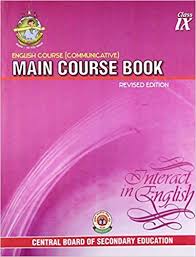Class 9 - English : Main Course Book
Chapter 3A - The Indian Rhinoceros

Top Block 1
Question 1: The Indian Rhinoceros: Where are they? Do they have a future
(See Main Course Book, Pages 45-46)
The list seems endless, doesn’t it? Are these things not shameful enough to set us pondering deeply over the harm that we are inflicting on nature’s creations?
- Why is the list ‘most shameful’?
- What is the name of the organisation that has been formed to protect and conserve wild life?
- Name at least ten other animals that are being exploited by man for commercial purposes. Surf the net to get your information and complete the following table.
| Animal | Part of the body used | Product |
|---|---|---|
| 1. | ||
| 2. | ||
| 3. | ||
| 4. | ||
| 5. | ||
| 6. | ||
| 7. | ||
| 8. | ||
| 9. | ||
| 10. |
Answer:
- Because we are oiling innocent animals to fulfill our greed.
- WWF: World Wildlife Federation
| Animal | Part of the body used | Product |
|---|---|---|
| 1. Elephant | Teeth | Ivory |
| 2. Milk | Fur | Fur coat, bags |
| 3. Crocodile | Leather | Bags, belts |
| 4. Peacock | Feathers | Ornamentation |
| 5. Tiger | Nails, skin | Tiger nail is supposed to have aphrodisiac properties. Hide is used as a sign of bravery. |
| 6. While | Meat | Meat is very popular in japan |
| 7. Siberian crane | Meat | Meat is used in certain parts of India |
| 8. Leopard | Skin | Ornamental purpose |
| 9. Stag | Horns and Skin | Decorative items |
| 10. Owl | The whole bird | Rituals |
Question 2: Read this article about the great Indian Rhinoceros. [You will find the information useful for your group discussion in A.5.]
(See Main Course Book, Pages 46-48)
Answer:
Summary of the extract: The Indian Rhinoceros is mainly found in north eastern part of the Indian peninsula. During early 1900s the population of rhino dipped to as low as about 100. Rhino conservation in India is a success story with current population standing at about 3000. Rhinos are usually solitary animals but make group for reproduction. They are big animals and have virtually no enemy because of their size. They are poached for their horns which are supposed to have aphrodisiac properties. Kaziranga is one of the major sanctuaries for rhinos.
Question 3: In Units 1 and 2 you learnt and practised the skill of deducing the meanings of new words by using other words in the given context Now use that skill to deduce the meanings of words in the article you have read. Here is an example.
(a) They are solitary creatures with the exception of the mothers and calves and breeding pairs, although they sometimes congregate at bathing places. (See Main Course Book, Page 49)
Deduce the meanings of the following words from the passage you have just read, using other words in the context to help you. Copy and complete the following:
| Word | Words/clues that helped me | What I think the word means | What the dictionary says | Were you (✔) (tick mark) or (X) |
|---|---|---|---|---|
| confined | ||||
| ranged | ||||
| overlapping | ||||
| bobbing | ||||
| olfactory | ||||
| aggregation | ||||
| plummeting | ||||
| mortality | ||||
| vulnerable | ||||
| poached |
Answer:
| Word | Words/clues that helped me | What I think the word means | What the dictionary says | Were you (✔) (tick mark) or (X) |
|---|---|---|---|---|
| confined | To tall grasslands and forests in the foothills of Himalayas | Found only in the given area | Limited or restricted | ✔ |
| ranged | Throughout the entire stretch | Found in the given area | the region over which a population or species is distributed. | ✔ |
| overlapping | None | To cover the next part | to lap over (something else or each other); extend over and cover a part of; imbricate. | X |
| bobbing | Waving or bobbing heads | Shaking heads | a short, jerky motion | X |
| olfactory | None | Related to | of or pertaining to the | X |
| aggregation | Often greets each other | Living with each other | a group of organisms of the same or different species living closely together but less integrated than a society. | ✔ |
| plummeting | Population had fallen to | Declining | To decline suddenly and steeply | ✔ |
| mortality | None | Death | the relative frequency of deaths in a specific population; death rate. | X |
| vulnerable | Unguarded calves | Can be killed easily | open to assault; difficult to defend | ✔ |
| poached | None | Killed or caught | to trespass, esp. on another’s game preserve, in order to steal animals or to hunt. | X |
Mddle block 1
Question 4: Punctuate the Following:
the indian rhinoceros was the first rhinoceros known to europeans rhinoceros comes from the greek rhino meaning nose and ceros meaning horn the indian rhinoceros is monotypic there are no distinct subspecies rhinoceros unicornis was the type of species for the rhinoceros family first classified by carolus linnaeus in 1758 the indian rhinoceros was the first rhino widely known outside its range the first rhino to reach europe in modem times arrived in lisbon on may 20,1515 king manual I of portugal planned to send the rhinoceros to pope leo x but the rhino perished in a shipwreck.
Answer:
The Indian rhinoceros was the first rhinoceros known to Europeans. Rhinoceros comes from the Greek ‘rhino’ meaning nose and ‘ceros’ meaning horn. The Indian rhinoceros is monotypic. There are no distinct subspecies. Rhinoceros unicornis was the type of species for the rhinoceros family, first classified by Carolus Linnaeus in 1758. The Indian rhinoceros was the first rhino widely known outside its range. The first rhino to reach Europe in modem times arrived in Lisbon on May 20, 1515. King Manual I of Portugal planned to send the rhinoceros to Pope Leo X but the rhino perished in a shipwreck.



